
Wen Haoding, Vice President, Clutch Systems and Transmission Technology, Automotive Division, Schaeffler Investment (China) Co., Ltd.
The Dual Clutch Transmission (DCT) is recognized for its exceptional power delivery and fuel efficiency. Among the various types, dry dual clutch systems stand out due to their minimal drag torque and energy loss, which are achieved through advanced electro-hydraulic control mechanisms. As a result, dry DCTs have become a benchmark in automatic transmission technology, offering superior efficiency compared to other systems.
Advances in Transmission Energy Efficiency and Emission Reduction
Over the past decade, significant progress has been made in energy-saving and emission-reduction technologies for transmissions. Key developments include:
(1) Manual Transmissions (MT): Use of low-viscosity oil to reduce drag, improved dual mass flywheel (DMF) technology that enhances stability at low engine speeds, and the replacement of bearings with ball bearings for better performance.
(2) Automatic Transmissions (AT): Increased gear logarithms and broader speed ratios, along with enhanced damper technology to minimize torque converter slip caused by lower lock-up speeds.
(3) Continuously Variable Transmissions (CVT): CVTs now support up to 400 N·m torque using Schaeffler LuK's efficient chain technology.
(4) Dual Clutch Transmissions (DCT): Software-controlled clutch engagement and gear shifting, 5% fuel savings from start-stop technology, and new electromechanical actuators for smoother operation.
Compared to traditional hydraulic torque converter-based ATs, these advancements can lead to up to 15% overall energy savings and emission reductions.
DCT: A Leading Choice for Energy Efficiency
One of the primary goals of modern automatic transmissions is to significantly reduce vehicle fuel consumption. DCTs have proven effective in this regard, especially for markets where manual transmissions have a low share. Volkswagen’s introduction of the six-speed Direct Shift Gearbox (DSG) in 2003 marked a major milestone, featuring an oil-cooled wet dual clutch. This innovation helped Volkswagen capture new market segments and establish itself as a leader in automatic transmission technology.
Subsequent models, such as the seven-speed DSG (7-DSG), further refined the DCT concept, focusing on reducing fuel consumption and expanding applications, particularly for engines below 250 N·m. A key component was the dry dual clutch introduced by Schaeffler in 2008, which offered a 6% efficiency improvement over wet DCTs.
Dry DCTs use air cooling instead of oil, which reduces energy losses but requires careful design to maintain thermal stability. This makes them ideal for high-performance applications while maintaining reliability and efficiency.
System Requirements for DCTs
Dry dual clutches demand higher functionality, stability, and comfort compared to manual transmissions. Key requirements include:
1) Automatic disengagement of the clutch when transmission control fails.
2) High thermal stability under limited weight and space constraints.
3) High wear resistance and stable clutch characteristic curves.
4) Compensation for axial and angular misalignment between the engine and transmission.
5) Isolation of engine torque fluctuations.
6) Efficient actuators for clutch and gear operations.
Based on experience from manual and automated manual transmissions, Schaeffler has developed several dry dual clutches to meet evolving demands. Figure 2 shows the dry dual clutch, dual mass flywheel, and actuator used in the Volkswagen 7-DSG.
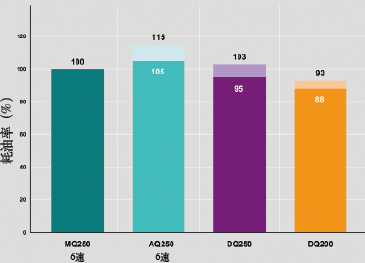
Figure 1 7-DSG (DQ200) and manual transmission (MQ250), torque converter automatic transmission (AQ250)
And 6-DSG (DQ250) fuel consumption comparison
Torsional Vibration Isolation
With increasing torque fluctuations and higher driving comfort expectations, modern internal combustion engines require more effective vibration isolation from both dampers and clutch systems. In DCTs, two main factors increase the need for damping: higher transmission efficiency reduces damping, and non-loaded gears are subject to vibrations from the carrier gears.
In manual transmissions, external curved spring dampers have proven effective. For DCTs, using dampers in both driven discs also helps. For non-turbocharged gasoline engines, combining dampers with targeted clutch slip control provides satisfactory results.
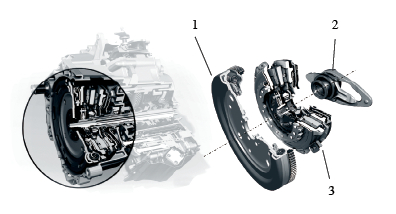
Figure 2 Dry double clutch in Volkswagen 7-DSG
1. Curved spring damper 2. Engagement system 3. Double clutch
Efficient Actuators for DCT Systems
Lever Actuators
Actuators for dry clutches must be highly dynamic, accurate, durable, and efficient, all within tight installation spaces. For the 7-DSG, Volkswagen developed a compact hydraulic control system powered by a motor and controlled via valves. As an alternative, Schaeffler developed electromechanical actuators in the form of lever actuators, as shown in Figure 3.
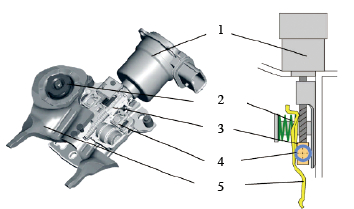
Figure 3 Lever actuator for clutch operation
1. motor 2. spring 3. screw 4. ball 5. lever
These actuators store elastic energy to engage the clutch, acting on the lever’s outer end. The lever ratio is determined by the position of the ball screw, driven by a motor fixed to the transmission housing. This allows for variable leverage, enabling the motor to operate efficiently with minimal power consumption.
Traditional components that convert motor rotation into linear motion often fail to meet the power density and efficiency needed for DCT actuators. To address this, Schaeffler developed a four-row ball screw with internal raceways, ensuring minimal installation space. Special balls were also designed to handle loads up to 7000N smoothly.
Thus, the lever actuator is nearly fully integrated into the clutch housing, requiring no extra space.
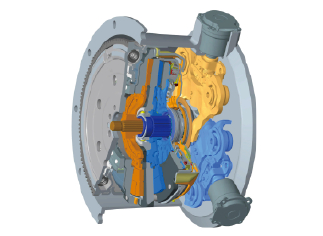
Figure 4 Dry double clutch system with electromechanical lever actuator
Motor Drive Transmission Actuator
Schaeffler’s Active Interlock actuator (see Figure 5) is part of the electric transmission actuator. It features a shifting finger unit with self-locking and disengaging functions that work with the internal shifting system of the transmission. By shifting the finger, any gear combination from the two sub-transmissions can be pre-selected and shifted. The active interlock mechanism ensures that all other gears in the same sub-transmission are disengaged before another gear is engaged, eliminating the need for additional sensors or emergency strategies.
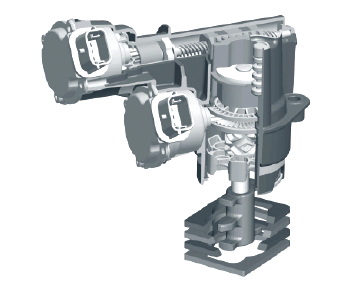
Figure 5 Electric actuator with active interlock mechanism transmission
Wet Dual Clutch Transmission
Wet DCTs are ideal for vehicles with high torque, heavy weight, or limited radial space. The cooling circuit can be optimized using a low-pressure independent cooling system, making all requirements for dry DCT actuators equally applicable to wet DCTs. Using an electromechanical actuator to directly control the wet DCT through the joint bearing (see Figure 6) reduces hydraulic losses, further improving fuel efficiency.
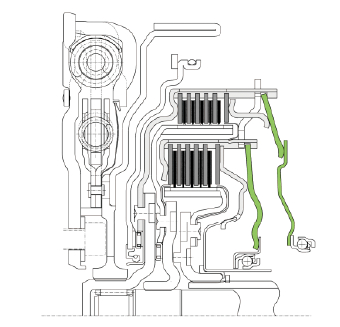
Figure 6 Wet double clutch with spliced ​​bearing
Although wet DCTs can use the same active interlock actuator as dry DCTs, their clutch actuators may vary. They can operate a double centering splitter cylinder (CSC) or a hydraulic clutch actuator (HCA) via a hydraulic system. These configurations are as efficient as lever actuators since there is little hydraulic loss, and it is easier to ensure the seal of the wet clutch.
Future Development of Transmission Energy Saving and Emission Reduction Technologies
Over the next 5 to 10 years, we can expect the following trends:
1) MT will expand its speed ratio range to allow more overdrive conditions, with increased use of CPA (Continuously Variable Powertrain Architecture).
2) AT will reach 9 or 10 speeds, with larger speed ratio ranges and more use of CPA for efficient low-speed engine operation.
3) More high-efficiency chain applications from LuK will appear in CVT medium torque ranges.
4) DCTs will adopt on-demand actuators like the Schaeffler Hydraulic Clutch Actuator (HCA) in new designs.
5) Engine start-stop systems (ESS) will become more widespread.
6) Hybrid powertrains will continue to evolve.
Challenges include increasing gear pairs and speed ratios without adding weight or cost, optimizing shift control software to enhance driver experience, and improving start-stop comfort, including noise, vibration, and harshness (NVH) issues.
Transmission Development Trends
Looking at current trends across different regions, we see varied technical preferences: AT is strong in North America, CVT in Japan, and DCT in Europe. In China, multiple transmission types are expected to develop significantly. From another perspective, AT is more common in rear-wheel-drive (RWD) vehicles, while CVT and DCT are more prevalent in front-wheel-drive (FWD) models.
Due to differing technical specifications and regional preferences, the diversity of transmission types will remain. Transmission efficiency, losses, and hybridization will play a critical role in future market competition.
Conclusion
Many DCT applications have demonstrated that both dry and wet dual clutches meet the demands of modern automatic transmissions. More models will soon enter mass production. Combined with efficient actuators like electromechanical systems, DCTs will set the standard for fuel efficiency, power, and longevity.
Whether paired with internal combustion engines or electric motors, transmissions with motor actuators are well-suited for hybrid and start-stop systems. This has been reflected in the development of several manufacturers and verified by Schaeffler’s “ESG†prototypes, which use axially parallel-arranged motors. Similar products are expected to launch soon.
High-efficiency dry and wet DCTs, alongside future torque converter and CVT technologies, will continue to drive innovation in energy-saving and emission reduction in the automotive industry.
Emergency Spotlight,Handheld Spot Light,Led Emergency Spotlight,Twin Emergency Spot Light
JIALINGHANG ELECTRONIC CO.,LTD. , https://www.jlhemergencylighting.com